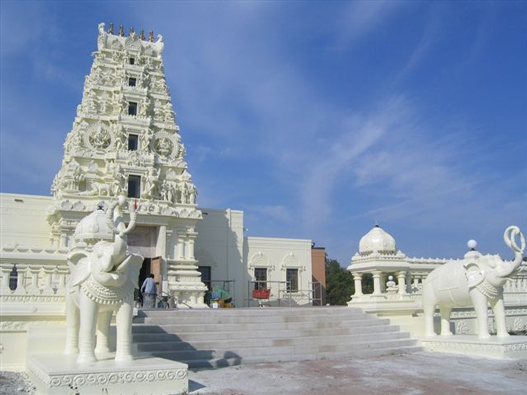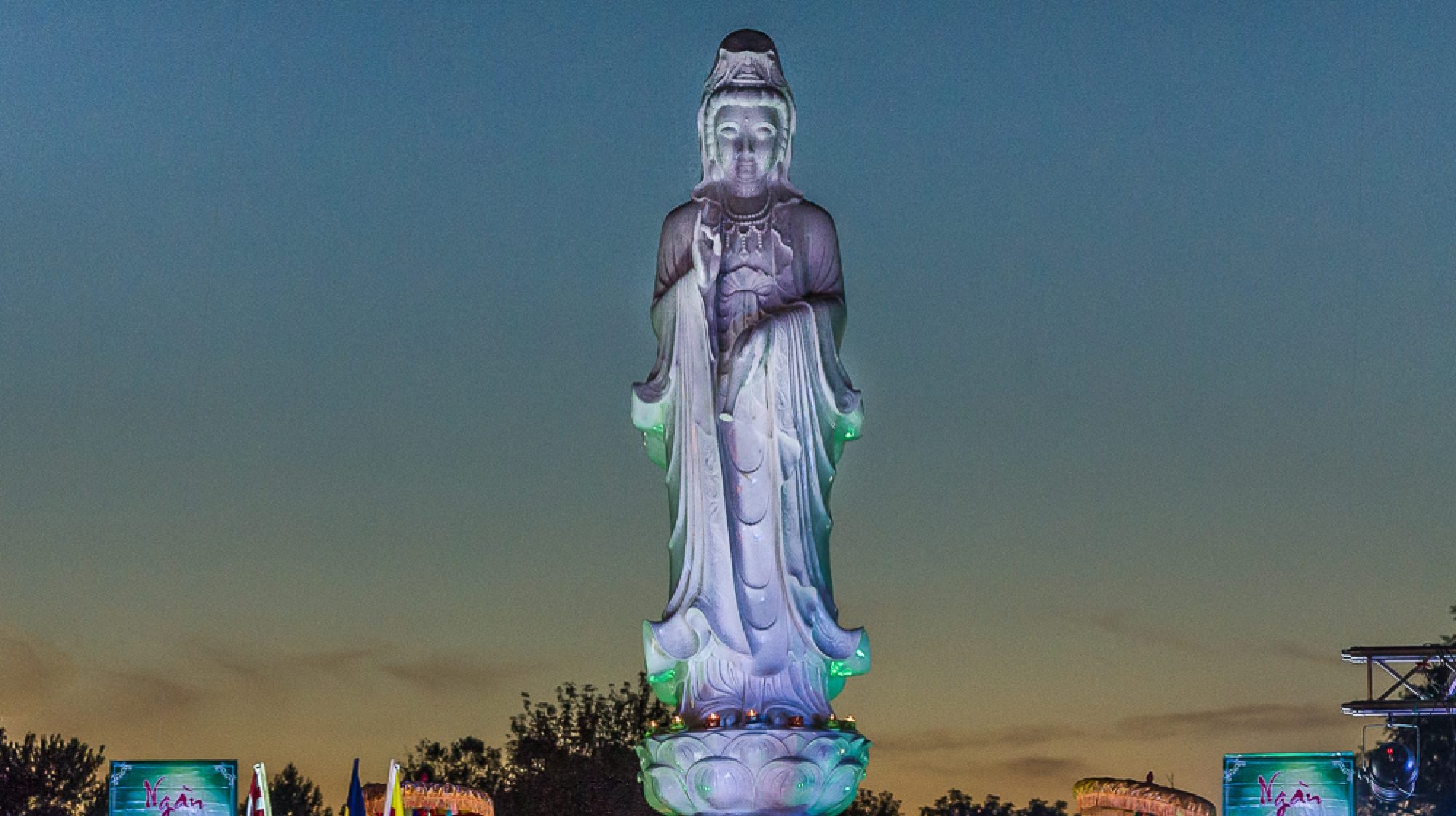Hindu Temple and Cultural Center Of Iowa

CONTACT
HOURS
ETIQUETTE
Phones:
(515) 795- 2635
(515) 832- 3355
Email:
For more information, check out their website!
http://www.iowatemple.org/
Meeting Times:
Monday – Friday
9 AM – 12 PM
5 PM – 8 PM
Saturday
9 AM – 8 PM
Sunday
9 AM – 6 PM
Remain silent as you enter the Main Hall
Please wear traditional Indian Clothing, if possible
Wearing shorts ( for anyone over the age of 12) isnt advised
No footwear is allowed inside the Mandir
Video and photographs aren’t allowed inside the Main Hall of the temple
Student Testimonial
Nestled in a bend of the Des Moines River just south of the town of Madrid, the Hindu Temple and Cultural Center of Iowa enjoys a location as auspicious as any outside of India. The temple opened in 2005, after three long years of construction requiring dozens of skilled craftsmen from India. With its inaugural dedication, the dream of the central Iowan Hindus was finally realized—a temple to house and worship the gods, a temple to gather and unite the community.
Like most US Hindu temples, the Madrid temple serves Hindus of many different beliefs and practices. A quick tour of temple’s sanctuary makes this clear. The western wall is lined with white-marble statue shrines of deities associated with Vishnu and the mother goddess (Lakshmi, Saraswati, Swami Narayan, Durga), while the eastern wall contains black-granite statue shrines of Shiva and his wife and children (Parvati, Ganesha, Karthikeya). Still, the temple is considered “Vaishnavite” since its central deity is Vishnu—more precisely, a black-granite statue of a south Indian form of Vishnu named Balaji or Venkateshwara. Flanking Balaji are his traditional south Indian wives, Bhu Devi and Shri Devi. And on either side of this central shrine are shrines for the primary incarnations of Vishnu: Rama (and his family) and Krishna (and his wife), each in their traditional north Indian, white-marble form. With statues also of the nine celestial beings (Navagrahas), the sanctuary of the temple houses twenty-six deities in all (not including reliefs of all ten incarnations of Vishnu that line the northern wall).
Though this plentitude of divinity dizzies most visitors, Hindus recognize the many gods as manifestations of one underlying divine reality, commonly known as Brahman. Moreover, this abundance offers Hindus not only personal choice regarding which deity to worship but also a diversity of divine powers to address for their many differing needs and words of thanks.
Many Hindus visit the temple to worship these gods individually, engaging in the act of darshan—seeing and being seen by the gods. But the temple also hosts no shortage of daily, monthly, weekly, and yearly communal ceremonies and festivals. Daily, the temple holds a ritual reading of sacred scripture (paranayam) about Visnhu. Weekly, it performs a ritual bathing (abhishekam) of Shiva and a ritual worship (puja) of Lakshmi. Monthly, it holds a ritual bathing of Balaji, Parvati, Ganesha, Karthikeya, and the Navagrahas; a ritual worship of Vishnu (as Narayana), Rama, and Durga; and a ritual reading of two classic Hindu scriptures, Bhagavad-Gita and Ramayana. And yearly, it celebrates all the major Indian religious and cultural festivals including Diwali, Holi, and the temple’s annual July anniversary.
Officiating all these ceremonies is Dr. Upreti, the temple priest. Although trained specifically as a priest of Shiva, he leads all these rituals and more, most notably those involving Vishnu, the temple’s central god. Such ritual and theological flexibility is often a necessity in the US, where Hindu priests are scarce and Hindu temples contain a multiplicity of gods. But it is growing more common even in India too, as Hindus increasingly see all the deities as manifestations of one and the same God. To put it in terms of a common Hindu metaphor: many different paths exist, all of which ascend the same mountain.
Digital Stories
Photo by Bob Blanchard (http://www.bobblanchardphotography.com)

